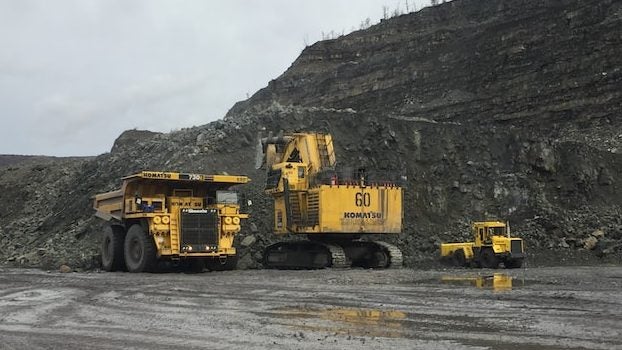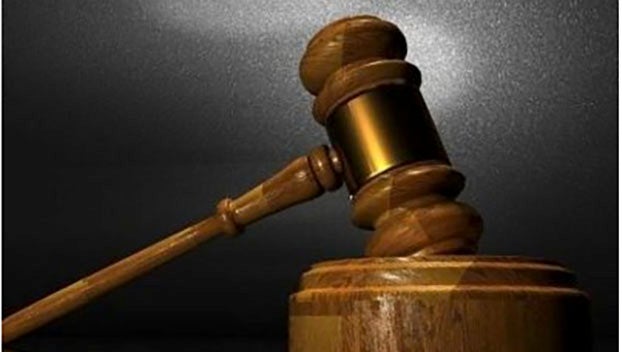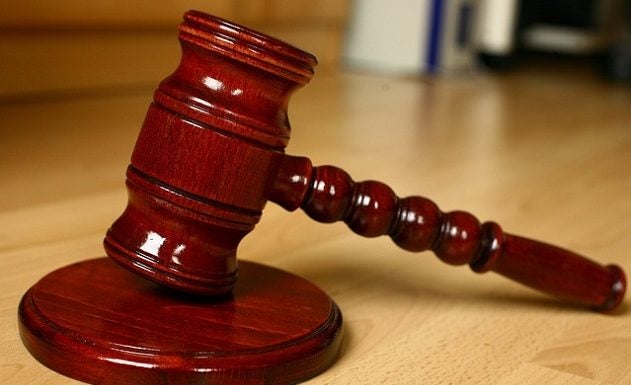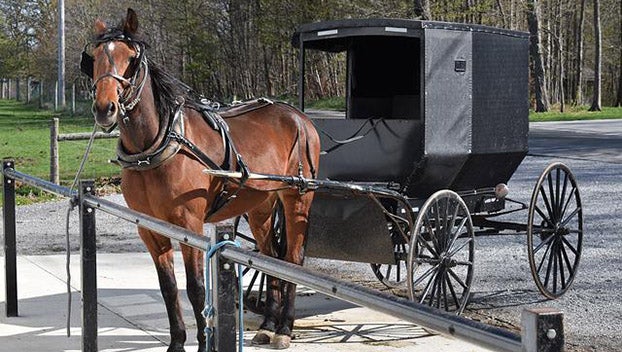Draft report warns gold mine could be ‘serious threat’ to Buckingham
Published 1:30 am Sunday, October 9, 2022
|
Getting your Trinity Audio player ready...
|
DILLWYN – An open-pit gold mine would put the health of Buckingham County residents at risk. That’s what a draft of the state workgroup’s report says. The Herald was able to get a copy of the draft report, which is still being altered and could look very different by the time it gets voted on and turned over to the General Assembly in December.
But the report is very clear on two points. First, it warns of a risk to local residents. Second, because of how close the James River is to the prospecting site, it raises concerns about health impacts outside of the county.
“Any open-pit gold mining project would pose a serious threat to the Buckingham community and other localities in the state,” the draft report says. “Science has proven time and time again that an open-pit mine pollutes nearby rivers, even when there is no accidental release of toxic mine waste.”
The report goes on to point out the James River is only two miles away from a portion of the land where Aston Bay Holdings is prospecting. That river delivers water to nearly 2.7 million Virginians. All it would take is one accident during actual mining, the report says, and if the protection systems fail, that would release poisonous chemicals and by-products into the river, possibly damaging the drinking water for millions of Virginians.
Even if there’s no accidents, the draft report says, any mining runs the risk of putting chemicals in the ground.
“With modern technology, gold mining involves drilling deep into the Earth, producing massive amounts of waste rock, tainted with dozens of compounds that, when exposed to the elements, can easily leach into the water table, streams and rivers,” the report says. “The waste may contain as many as three dozen toxins, including mercury, arsenic, cyanide, lead, acids and petroleum by-products.”
What is an EJ community?
If toxins do leach into the ground, that creates two problems, the report states. First, the residents whose land is contaminated will likely want to move. However, Buckingham has a large number of “EJ” or environmental justice communities, the report points out, residents who can’t afford to move even if someone would buy their land. Second, the contaminated land would make it almost impossible to stay, as it would “harm drinking water supplies and continue the encroachment of further injustice on black and brown communities that threaten the enjoyment and ownership of their land.”
Environmental justice communities are identified by the U.S. Department of Health and Human Services as areas with a “substantial portion of (people) below the poverty line that is subjected to a disproportionate burden of environmental hazards.” No part of Buckingham County falls outside of the low-income classification. In fact, Virginia’s economic data shows portions of Buckingham, including some areas around the prospecting site, classify in the 93rd percentile of low-income residents in the state.
That means there’s an issue with heavy poverty in some of the areas that would be affected by a gold mine the most.
“EJ communities bear the brunt of negative environmental consequence including loss of life, while reaping very little benefits, either financial or increase in quality of life,” the report says.
And the problems don’t just go away, it argues. It calls on the Assembly to protect Virginia residents from what it calls “toxic trespass”.
The problem, the report goes on to say, is that “existing mineral mine regulations were not drafted with gold mining in mind.” In fact, large scale gold mining has not happened in Virginia since the 1940s, more than two decades before any of the current mining rules were put in place.
Is a gold mine possible in Buckingham?
Now we’ve mentioned that prospecting is currently taking place, but has any actual gold been found in Buckingham? Yes, it has. In April 2019, the Canadian prospecting company Aston Bay Holdings announced they were beginning to search for gold in the area.
To be clear, Aston Bay isn’t a mining company. It’s a prospecting company. That means they search for gold, silver or other minerals, identify and purchase a location, then sell that information (and property) to the highest bidder. They can do this because under Virginia law, prospecting doesn’t require a state permit if you’re searching for anything other than uranium.
In statements given in March 2019 and July 2020, company officials declared their drilling confirmed a “a high-grade, at-surface gold vein system at Buckingham, as well as an adjacent wider zone of lower-grade disseminated gold mineralization.” In other words, they found enough to keep going. At the beginning of 2020, the company secured the right to prospect on 4,953 acres of land in Buckingham County.
In an interview last month with The Herald, Aston Bay CEO Thomas Ullrich said the gold vein they’ve found is almost vertical, approximately one to two meters wide, 200 meters in length and extends into the subsurface to about 100 meters deep.
“This is contained in a very small footprint, on the order of a few acres,” Ullrich said. “It is possible that the vein extends deeper and farther laterally along (the) strike.”
But they still don’t know how far it stretches, as Ullrich added the company was “still in the early stages of exploration.”
As for a timeline on when work might be finished, first it has to be restarted. The company hasn’t done any work in Buckingham since early 2020.
“We have conducted only preliminary exploratory drilling on the local landowners’ properties at Buckingham, and none for the past two years,” Ullrich said. “We have several quality potential projects, but a limited amount of funds. Over the last year and a half, we have been investing in the landowners in another county. We look forward to investing in Buckingham again.”
What happens next?
As we mentioned, this draft report came from the state’s workgroup. Created by the General Assembly in 2021, the group consists of two parts.
One of those is a technical committee, evaluating the scientific aspects of gold mining. That group is led by officials from the National Academies of Sciences, Engineering and Medicine (NASEM). The other group, which is who wrote this draft report, includes representatives from Virginia Energy, the Department of Environmental Quality, the Virginia Department of Health, the Council on Environmental Justice, the Monacan Indian Nation and local citizen groups.
The idea is to evaluate the impacts of gold mining on the area. The work group looks into the effects gold mining will have on the environment, including public health in general and the air and water quality.
Are existing regulations strong enough to protect air and water quality? Are there areas where mining needs to be banned? To answer those and other questions, experts in mining, hydrology, toxicology and other fields are being brought in. Also representatives of potentially affected communities in localities with significant deposits of gold are also included.
There’s at least one more of these public meetings scheduled. The next one will take place on October 18 in Buckingham. That will run from 9 a.m. to noon at the Buckingham Community Center. The Center is at 16268 N. James Madison Highway in Dillwyn.
Once those public hearings conclude, the two parts of the workgroup will come together to deliver that report we previously mentioned. That will be discussed in the next General Assembly session, which begins in January 2023.






